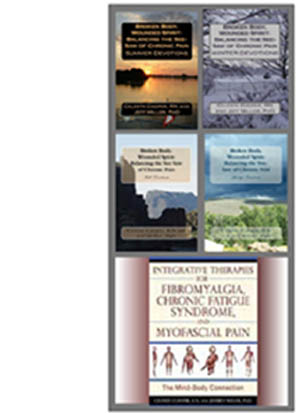This is a great question and one that has always confused me too. First, the tender point model was never meant to be the diagnostic hallmark which has evolved. It was originally developed as a tool to be used for analyzing participants for a study.
Most likely the tender points were paired to indicate that the tenderness and pain of fibromyalgia occurs on both sides of the body. I doubt there was any other significance because the criteria actually says one must have at least 13 of the 18 tender points for a diagnosis of FM. Thirteen tender points would mean that at least one of the pairs was broken up.
Excerpt ©
Unlike other disease processes, the symptoms of fibromyalgia affect all four quadrants of the body equally. In other words, tender points are found on both sides of the upper body (above the waist) and both sides of the lower body (below the waist). If there is a tender point in the left elbow, there will be another tender point in the same spot on the right elbow. Painful tender points are consistent and are considered chronic because they persist for a period of at least three months. (Cooper and Miller, pg. 9, 2010)
An exact description and tender point model can be found at http://www.thesethree.com/fibromyalgia/tender-points.php Be sure to browse the site for more important information.
Since the adoption of the tender point model as a diagnostic tool, it has met much criticism. Some patients have tender points in other areas of the body, more than 18 or less than 18, but still meet other criteria that have continued to evolve as we learn more about fibromyalgia. As a matter of fact there are those that think the tender point model should go by the wayside. The new preliminary proposed criteria only considers a WPI, wide-spread pain index. This concerns me because it is a reported complaint and the examiner will not have to put their hands on the patient at all. A physical exam has always been the greatest diagnostic tool the physician or nurse practitioner has.
Other considerations of the tender point model is the suspicion these are not tender points per se, but myofascial trigger points (MTPs) or pain in the MTP referral pattern of pain and neuralgia and other consequences. This has been shown in several studies. Read more about this at http://www.thesethree.com/cmp/chronic-myofascial-pain.php
Other helpful information can be found at In with the New, Out with the Old: Fibromyalgia diagnostics
Blogger http://fmcfstriggerpoints.blogspot.com/2011/08/in-with-new-out-with-old-fibromyalgia.html
And
Helping your doctor diagnose fibromyalgia
Blogger http://fmcfstriggerpoints.blogspot.com/2011/08/helping-your-doctor-diagnose.html
All blogs, posts and answers are based on the work in Integrative Therapies for Fibromyalgia, Chronic Fatigue Syndrome, and Myofascial Pain: The Mind-Body Connection by Celeste Cooper, RN, and Jeff Miller, PhD. 2010, Vermont: Healing Arts press and are not meant to replace medical advice. http://www.thesethree.com
This blog is based my answer to the question “Why are all of the fibromyalgia tender points paired?” as fibromyalgia expert at ShareCare.com
Thursday, January 26, 2012
Subscribe to:
Post Comments (Atom)











No comments:
Post a Comment